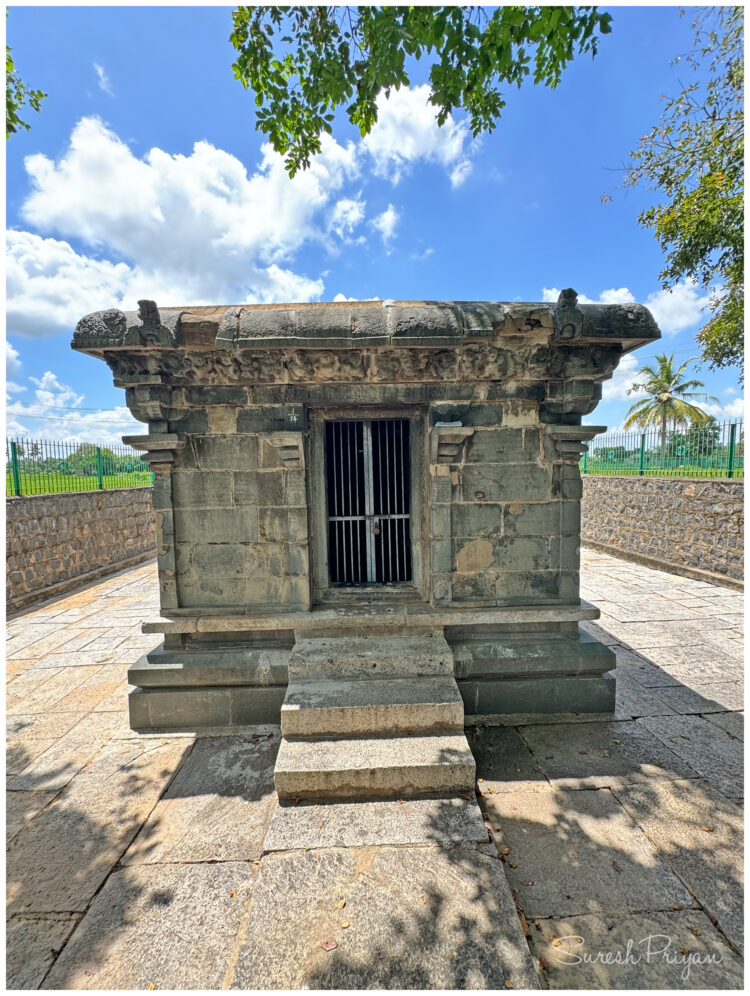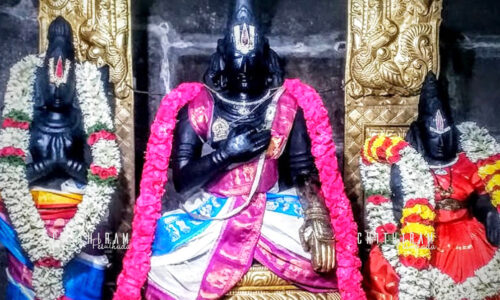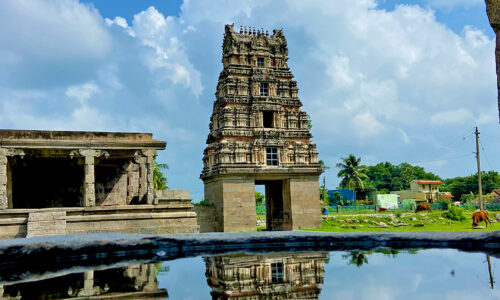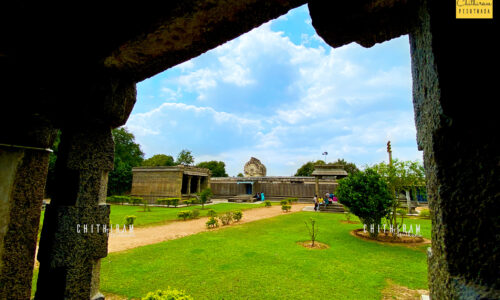Tucked away in the peaceful village of Tirumalpur in Ranipet District lies the little-known Konar Temple—a quiet but significant piece of Tamil Nadu’s heritage. Though not widely recognized today, the temple holds layers of history, tradition, and architectural interest.
How to Reach the Temple
The Temple is situated on the Tirumalpur to Panappakkam route, which is 1 Km from Tirumalpur Bus Stop and 4 Km from Tirumalpur Railway Station. Tirumalpur is located on Kanchipuram to Arakkonam Road.
Ideal Time to Visit the Temple
As this is an ASI site, it can be accessible from 8.00 AM to 05.00 PM
Brief about Presiding Deities
There are no Idols in the niche, but Broken, headless statues were housed on either side of the small hall called Ardhamandapa
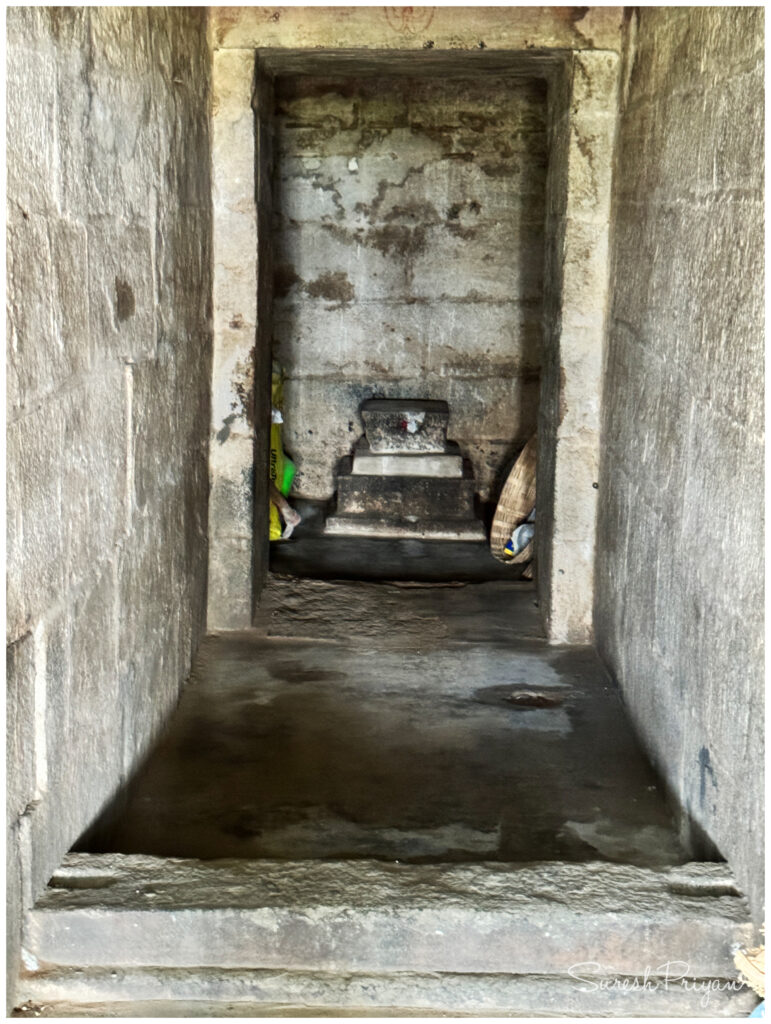
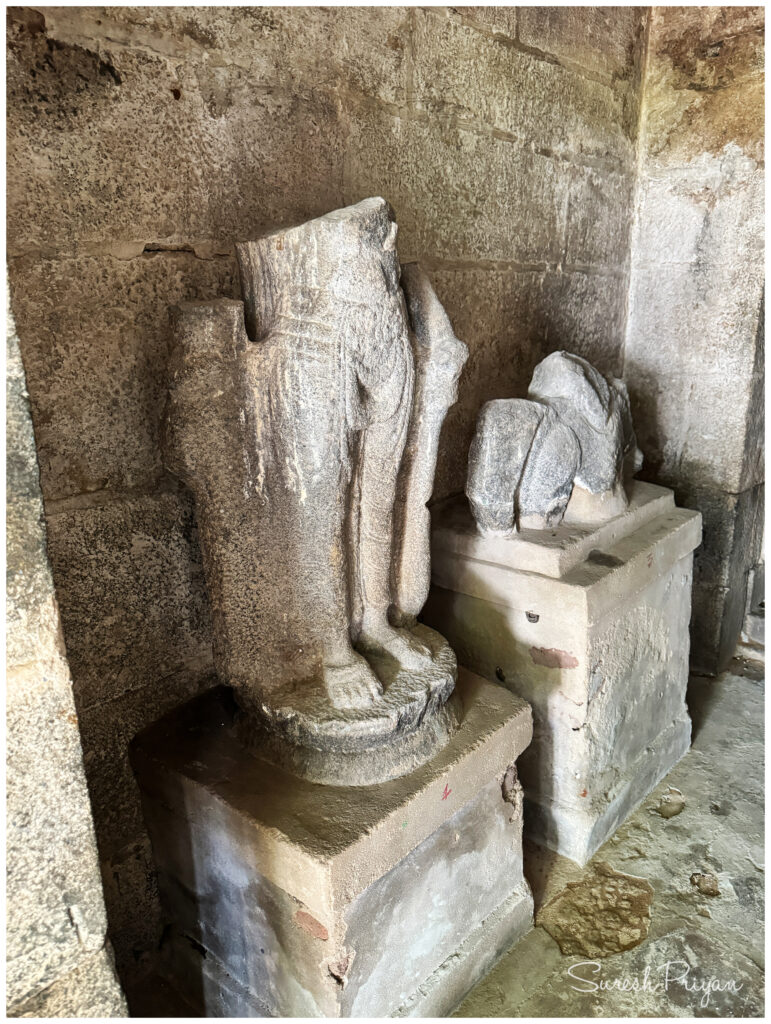
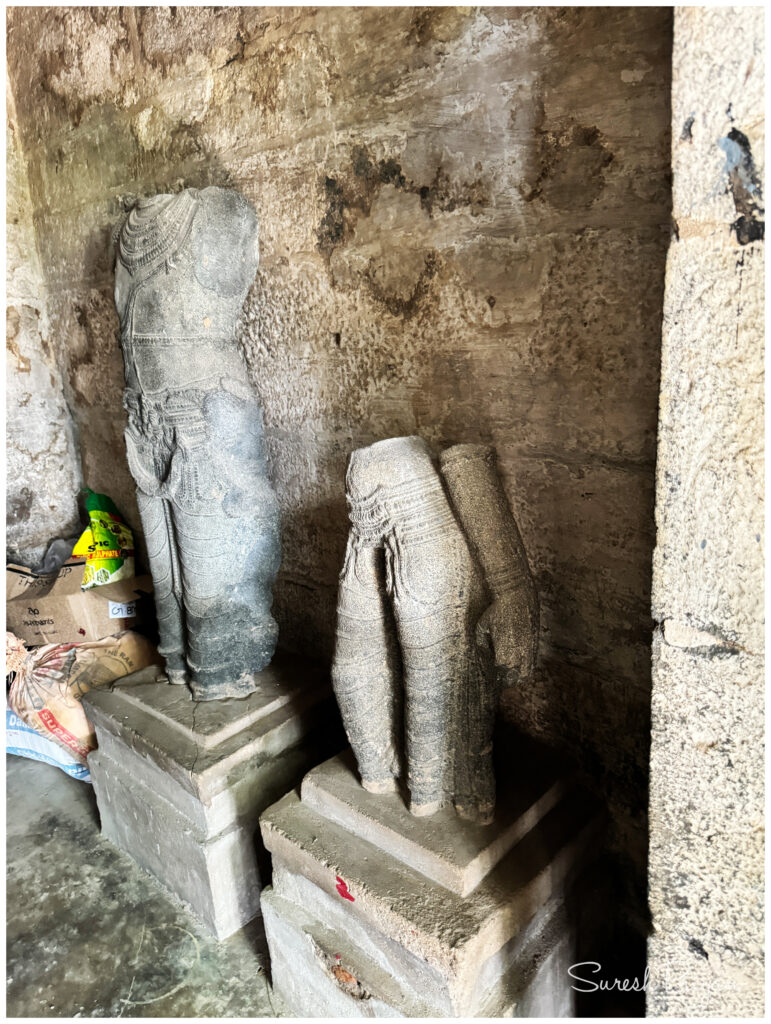
Whats unique about this temple
The Complete Temple was built with Greenstone / Dense Granite Stone, which was not sourced from this zone.
One of the miniatures has a relief of KudaKoothu: where Lord Krishan dances with Kudam, which is unique. Usually, these miniatures/sculptures have a single Kudam. Whereas here, Krishna dances KudaKoothu with 2 Kudam balancing on both hands.
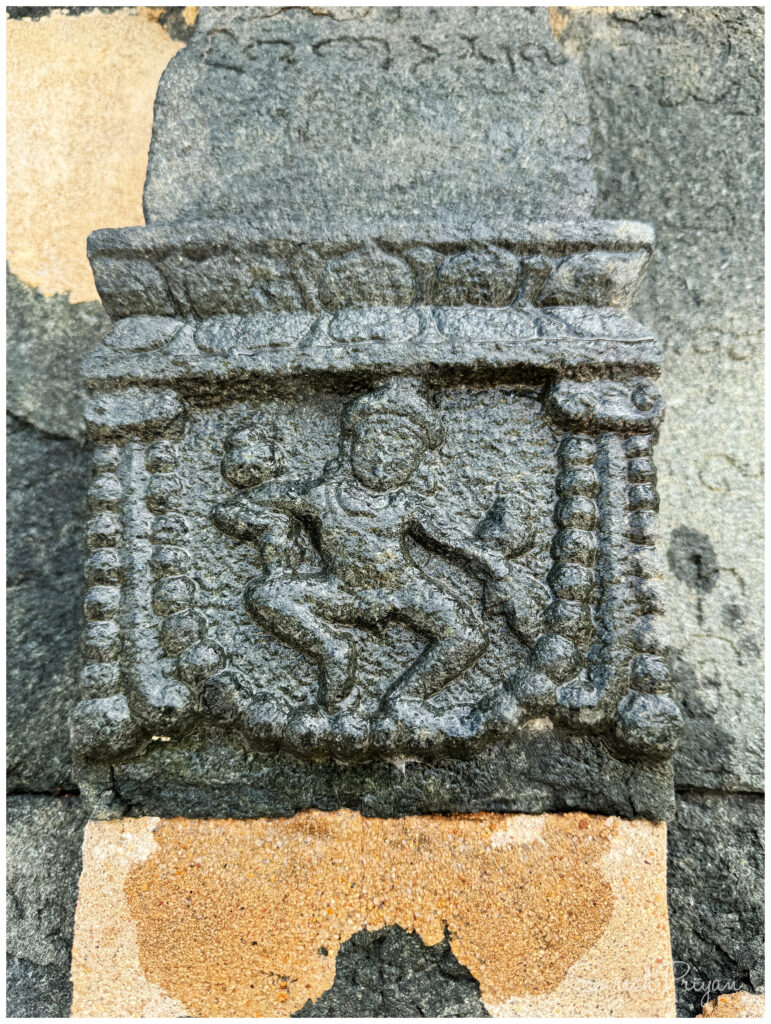
Paripadal a Sangam literature mentions this KudaKoothu as
“‘இடவல! குடவல! கோவல! காவல! , காணா மரப! நீயா நினைவ!”
Mentioning the Lord Krishna as the master of KudaKoothu.
And also the great epic Cilappatikaram has a note on this KudaKoothu as
“வாணன் பேரூர் மறுகிடை நடந்து
நீணிலம் அளந்தோன் ஆடிய குடமும்”
“குடத்தாடல் குன்றெடுத்தோ னாட லதனுக்
கடைக்குப வைந்துறுப் பாய்ந்து!”
Architecure
Buildings available in the Temple
The Konar Temple faces towards the east and consists of Mukha Mandapa, Antrala and Sanctum Sanctorum, built of densely green granite stone, presumably sourced from the Vellore region near Vallimalai. It is understood now that it has a simple structure with a sanctum that can only be seen up to the plane’s roof, as the top part of Vimana (superstructure) is unavailable. Apart from this, no other structure or Mandapa was available now.
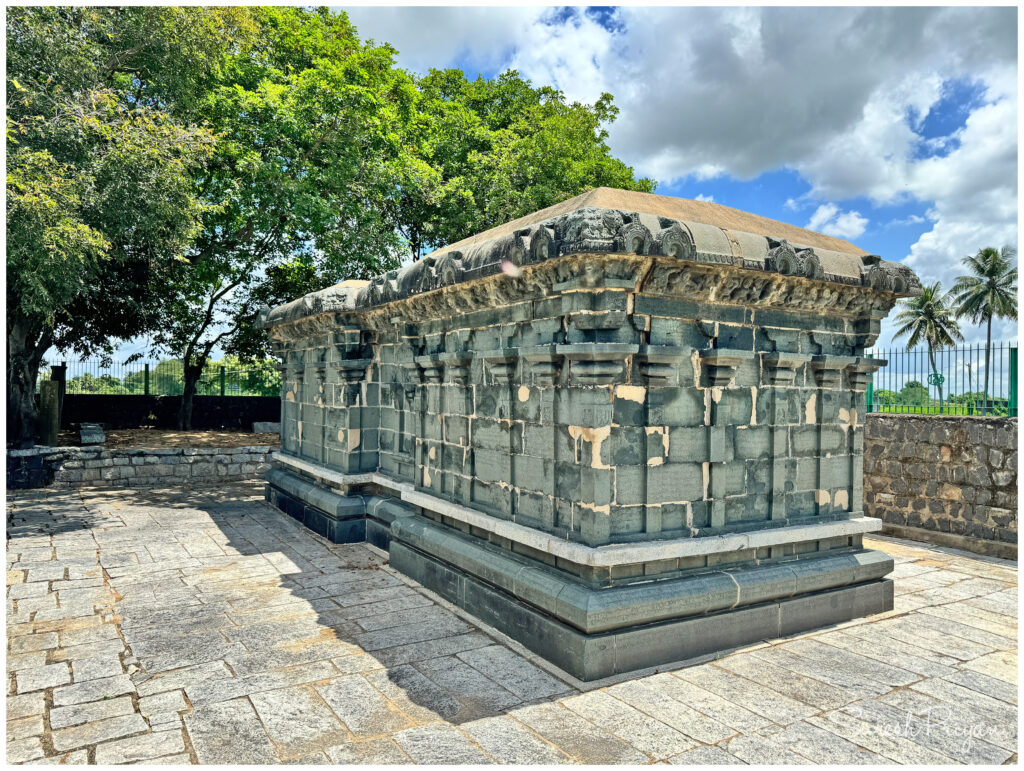
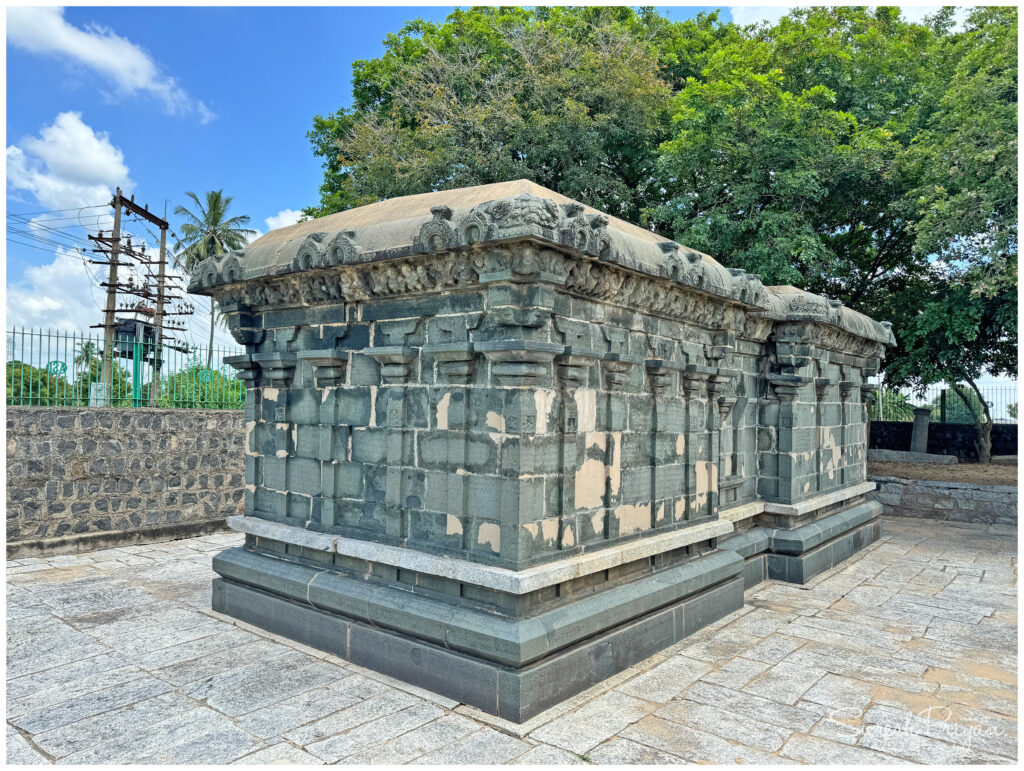
The Adhisthana is made of simple “Pada Bandha Adhisthana” with Upana, Jagadi, Tripatta-kumuda, Kandam with legs and Pattikai. Adhisthana refers to a “plinth,” “pedestal,” or “moulded base”. The Upanam is located at ground level but remains visible.

The Adhisthana structure ends at Pattikai, where an additional Kambu-like design is shown extending slightly indented across on top of the adishtana. Above this ridge rises the wall part. The Pattikai part is extensively built with White Granite stones, unique across pallava structures.
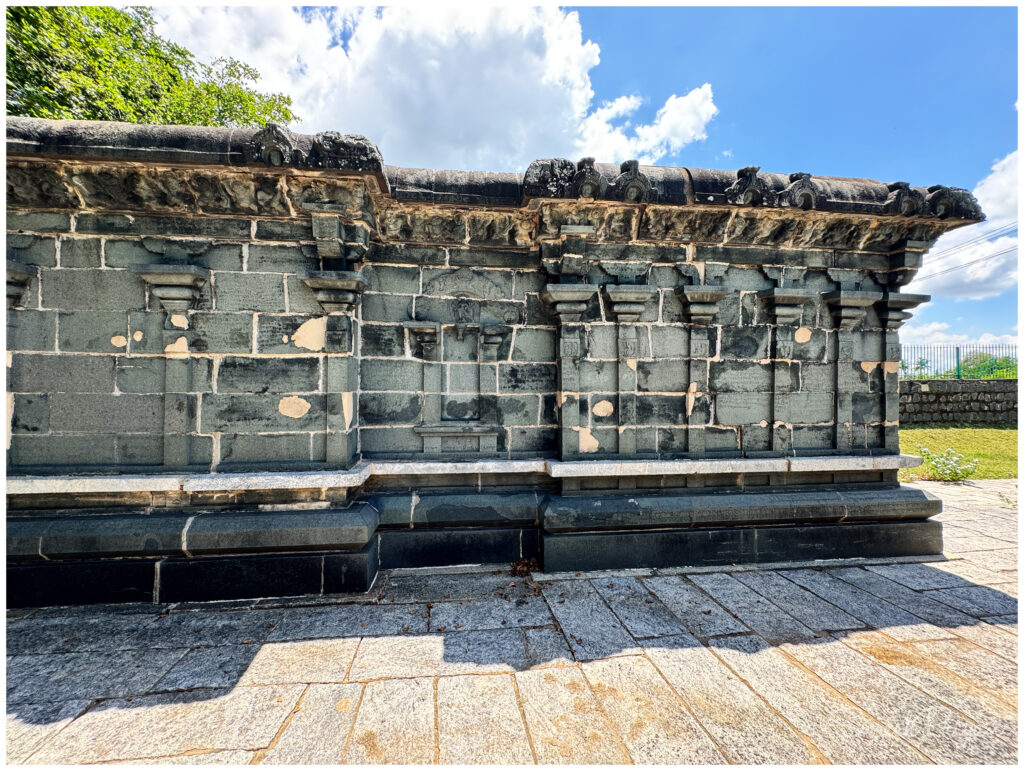
Four-faced (Brahmakanta) pilasters segment the external walls of the Temple have the (from the top) Wavy Corbel / Wavy Potika (Tharanga Pothigai), Veerakandam, Palakai, Pali, Kumbam, Taadi, Kalasam, Kumbam and MaaliThongal. And in particular, the sanctum pilasters have an inverted wave in the middle of all Potika.
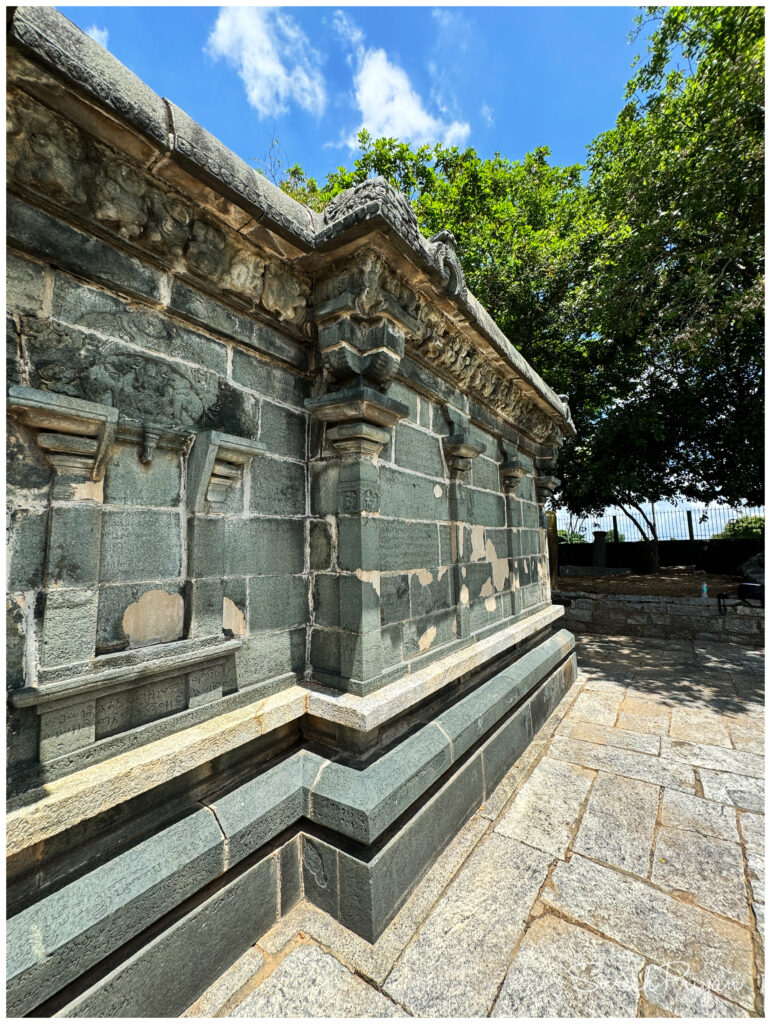

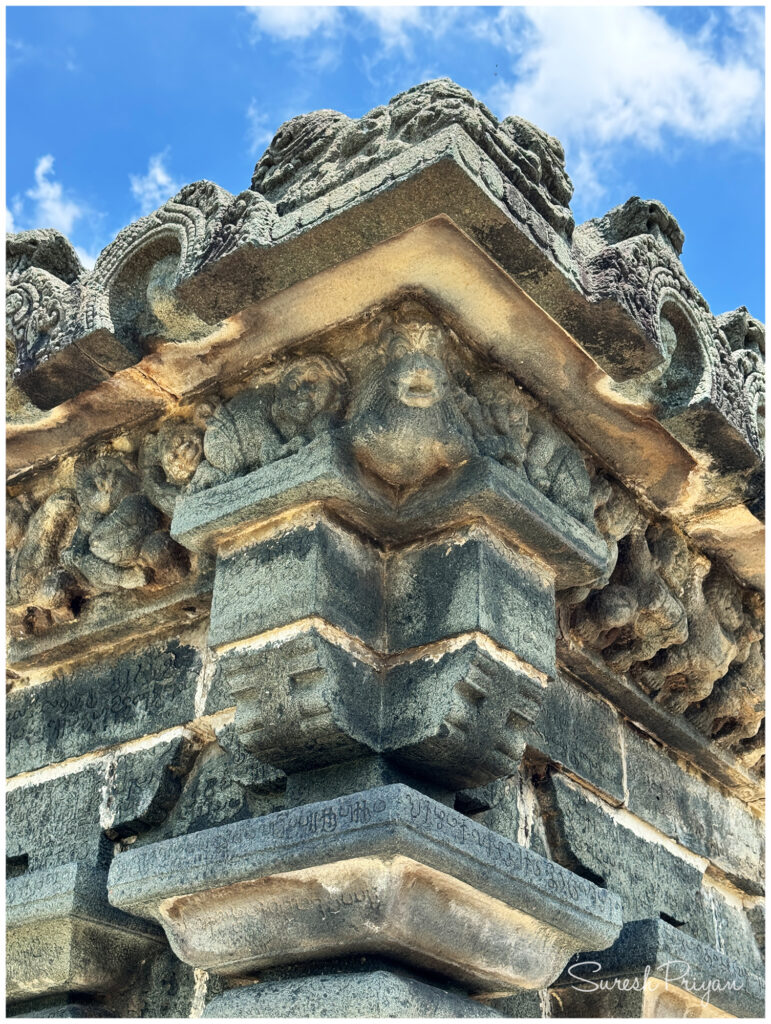
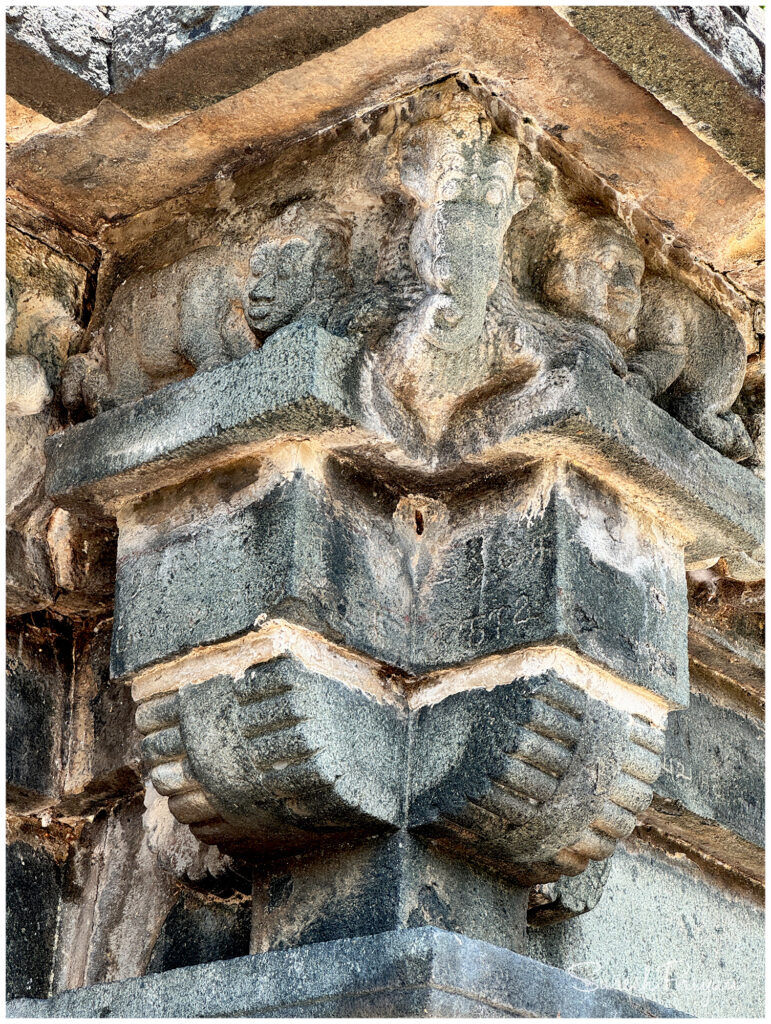
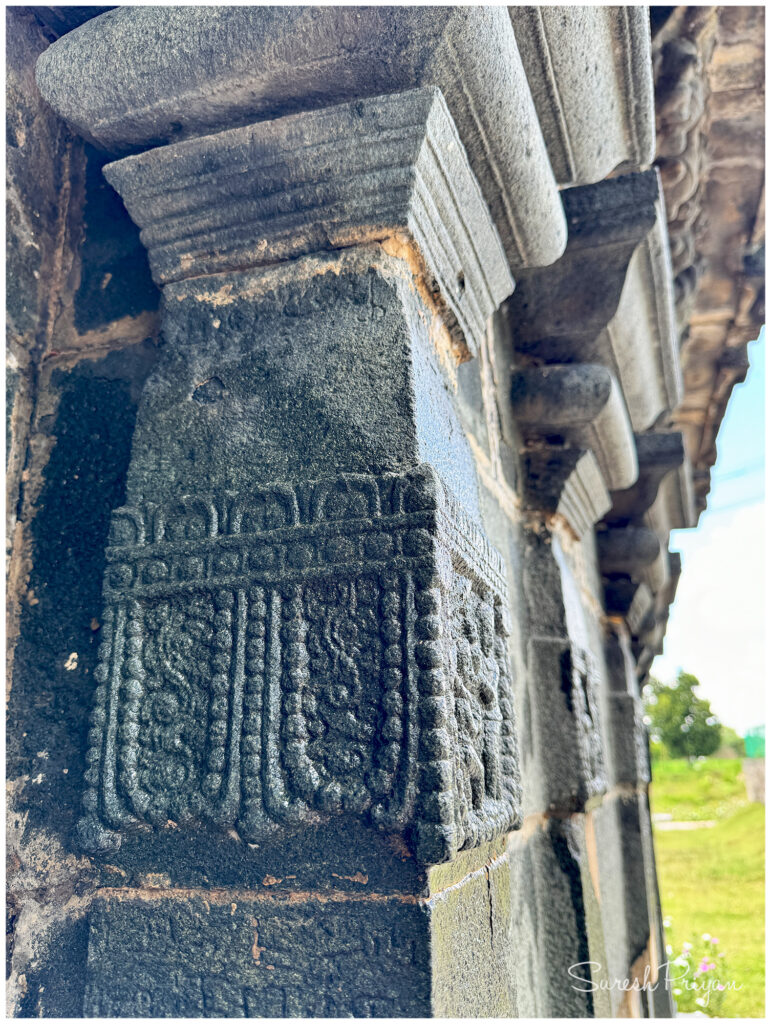
The Prastara consists of Valapi and Kapotam with Nasikudu, where beautiful Bhutaganas run in the Valapi section. Inside the Nasikudu, Gandharva is placed with lively expressions, and the Nasikudu are carved in pairs called Netranasis. To the end of each roof corner, KodiKarukku was carved beautifully, and Chandra Mandala was placed in the middle.
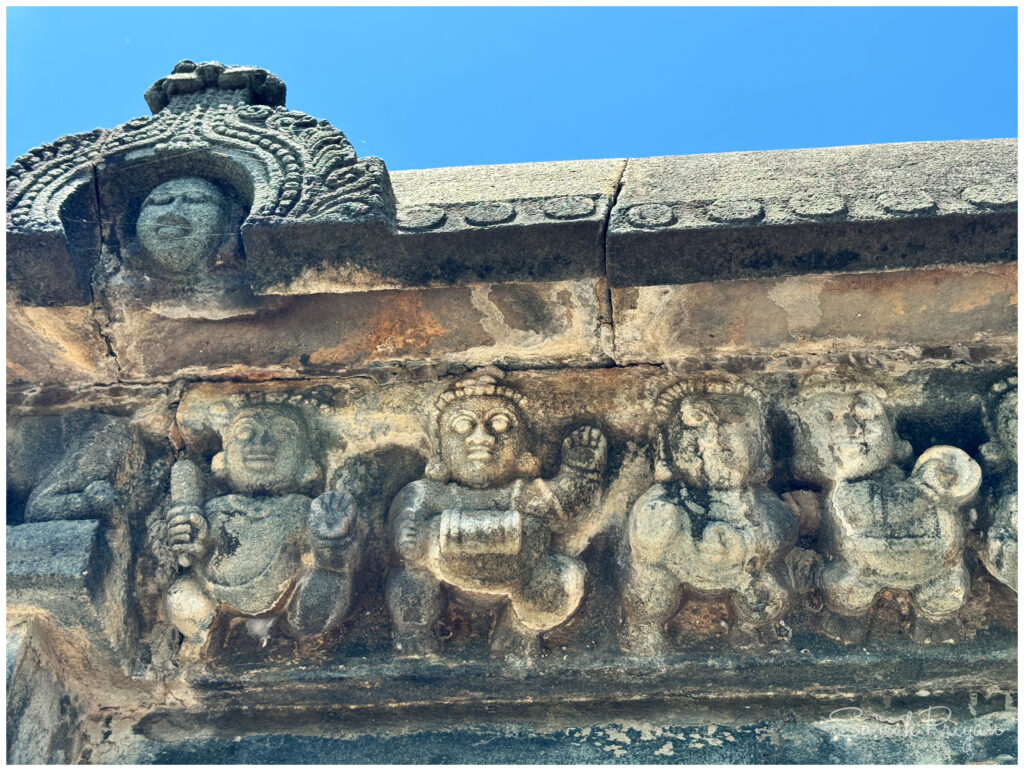

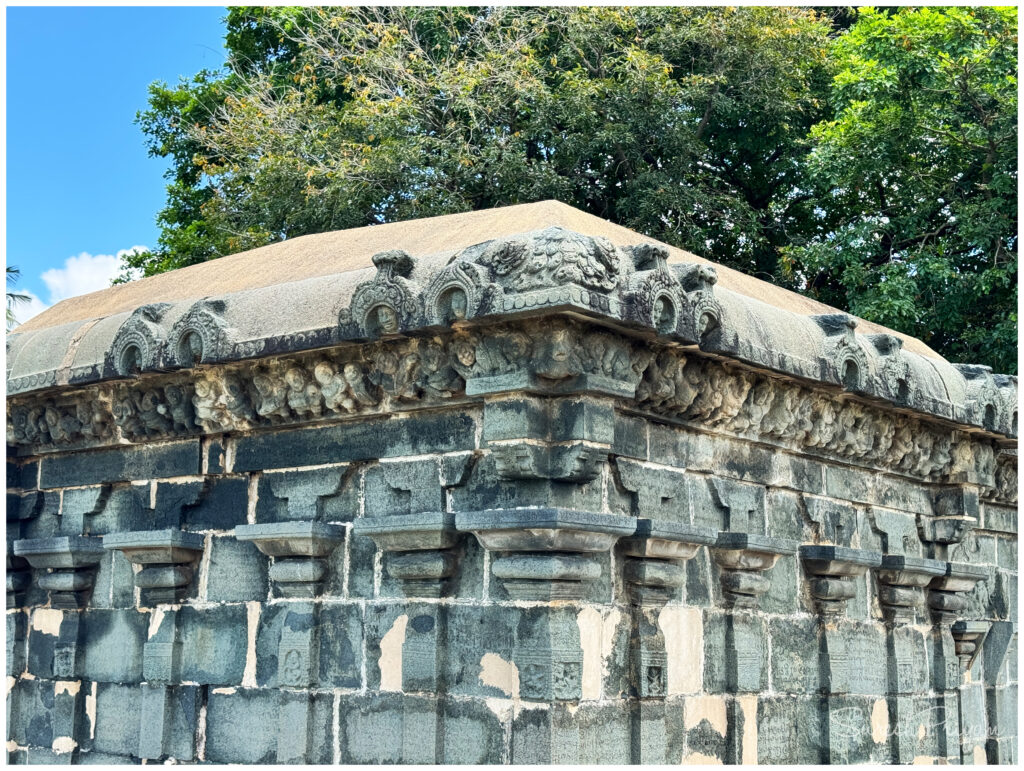


The Temple might have been constructed during the transition period between Pallavas & Cholas.
YouTube: https://www.youtube.com/c/chithirampesuthada
Facebook: https://www.facebook.com/chithirampesuthadasuresh/
Instagram: https://www.instagram.com/chithirampesuthada/
Flickr: https://www.flickr.com/photos/chithirampesuthada/
Web: https://chithirampesuthada.com/
Sculptures & Panels
Vimana & Sanctum Walls
The wall part of the Mukha Mandapam and Sanctum Sanctorum doesn’t have any Koshtam. Meanwhile, the Antrala, the enclosed area, has Kotta Panjara with a unique Makara Torana. To the South of this component, Gajalakshmi was placed, and the North Durga / MahishasuraMardini was carved.
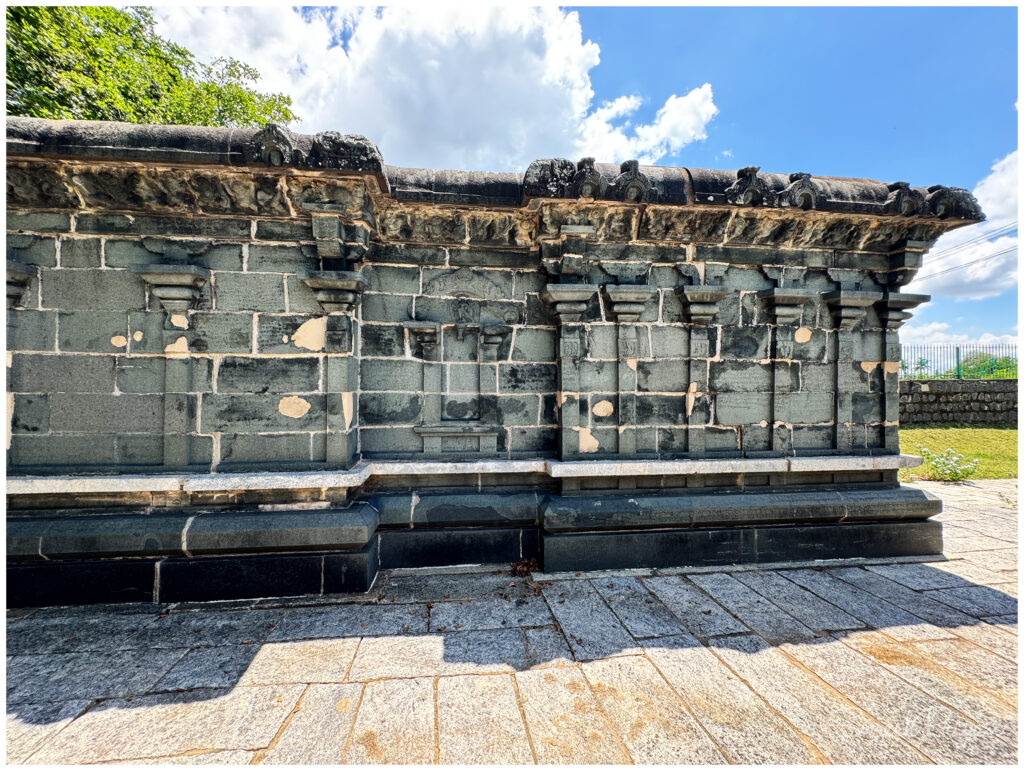
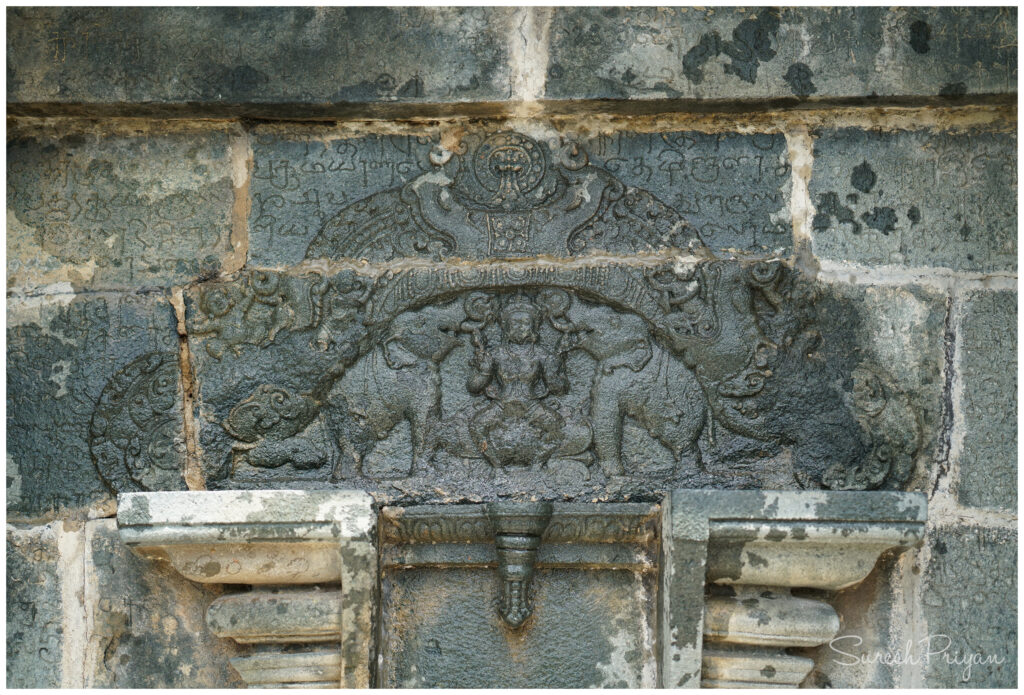

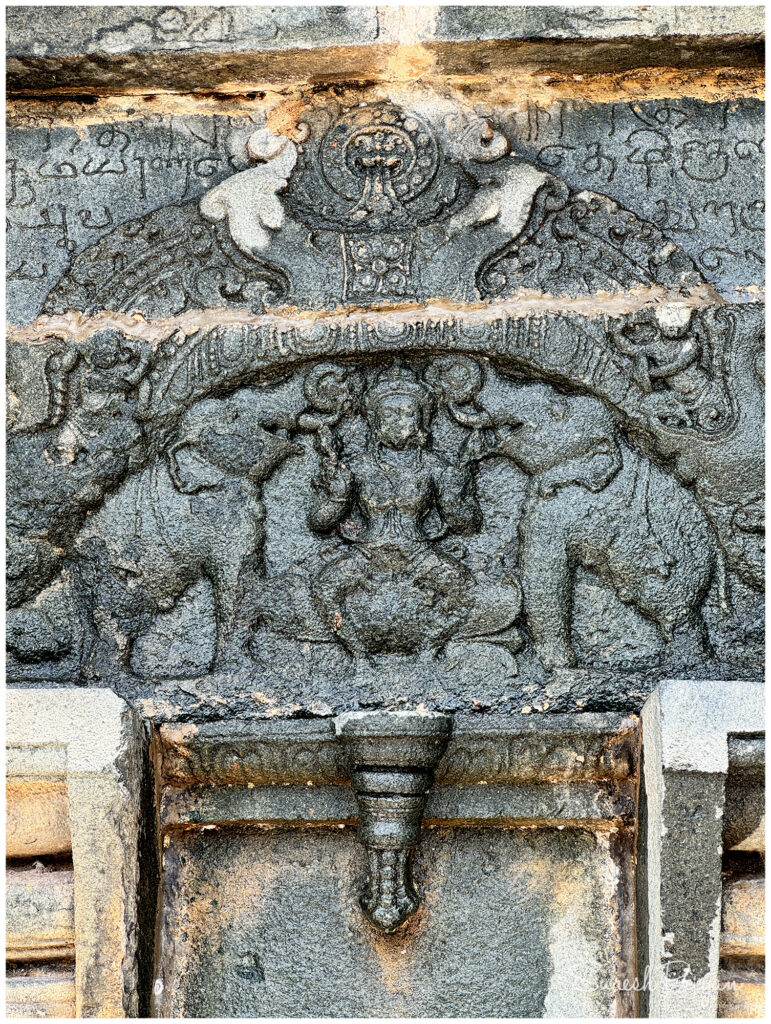


To the top of the entrance gate, Attamangalam sculptures were housed beautifully, with Gajalakshmi placed in the centre. Almost all the pilasters have miniature reliefs related to Vaishnavaite, NaatiyaMathar (Dancing Ladies) or MalaiThongal.
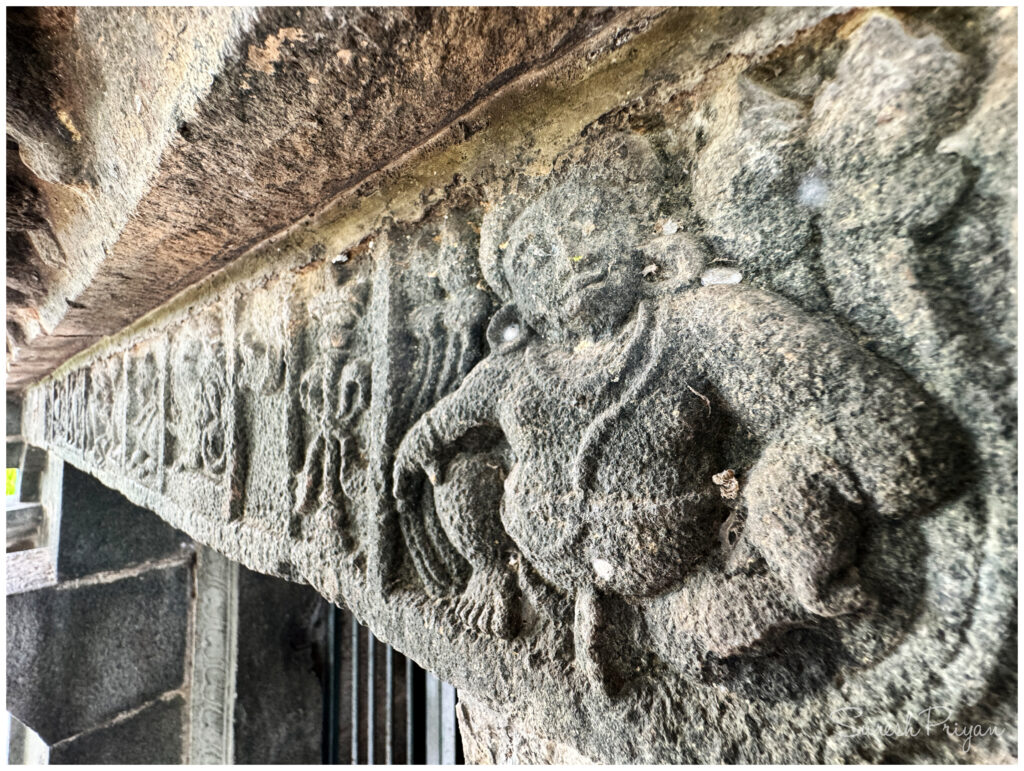
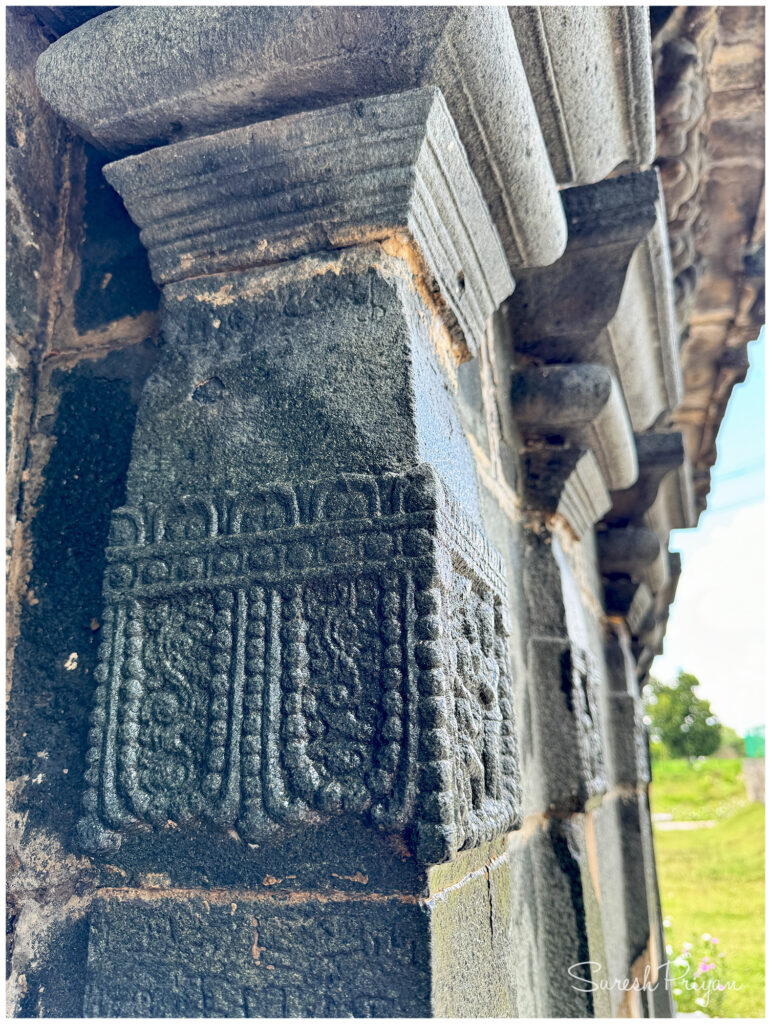
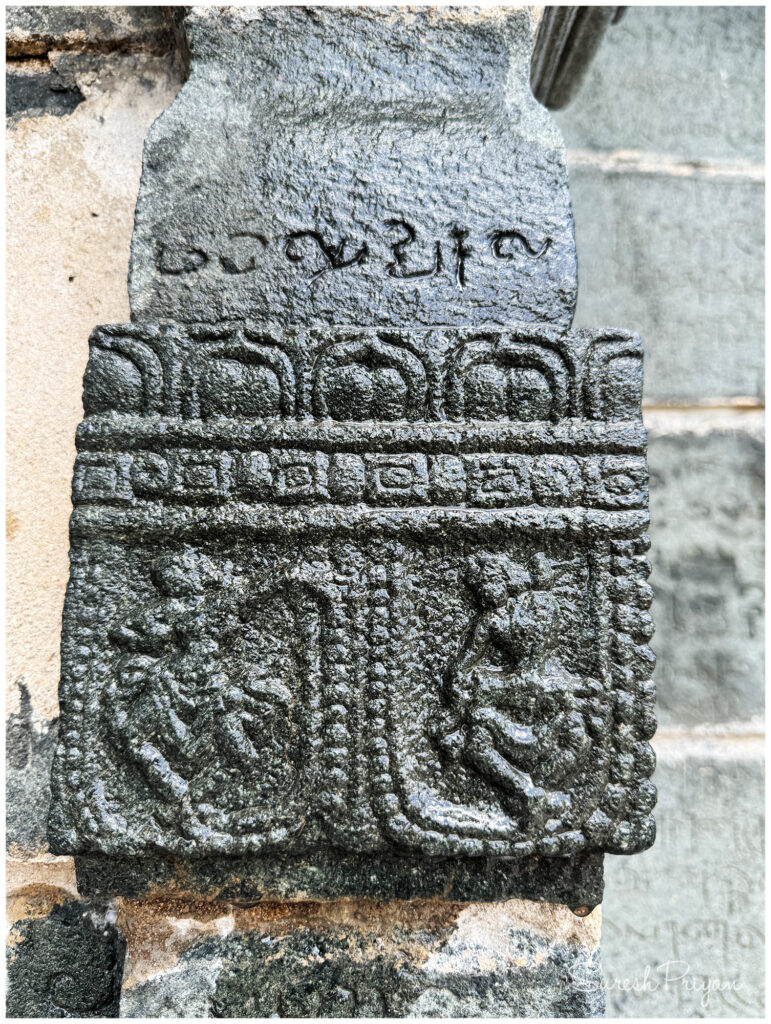
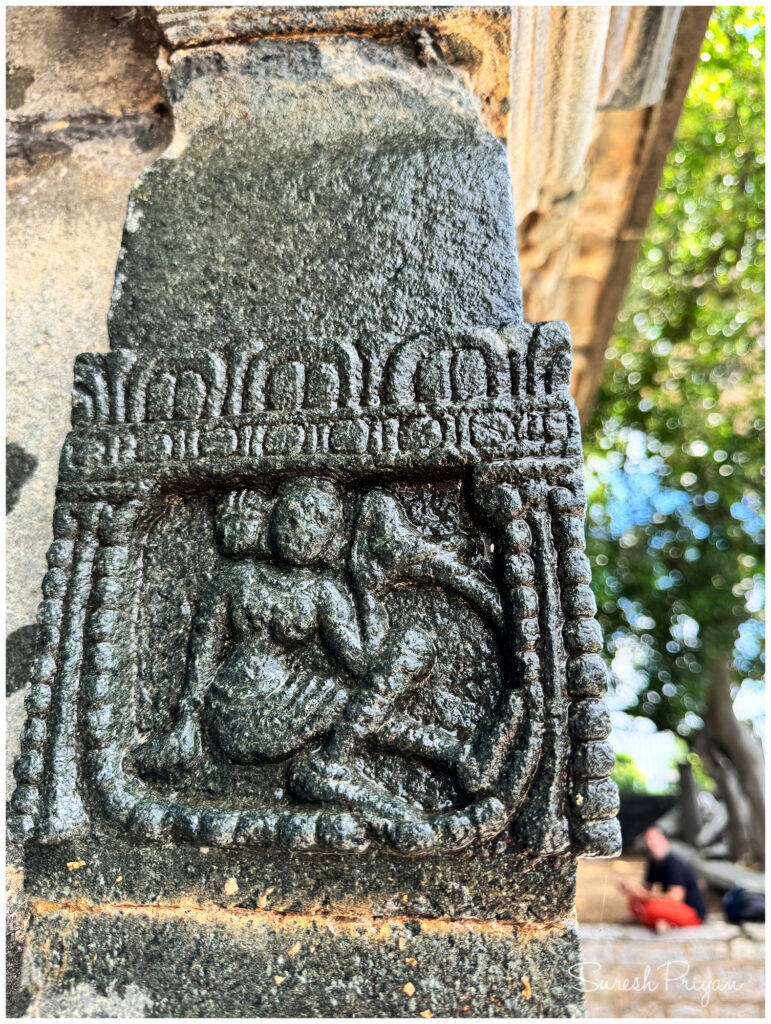
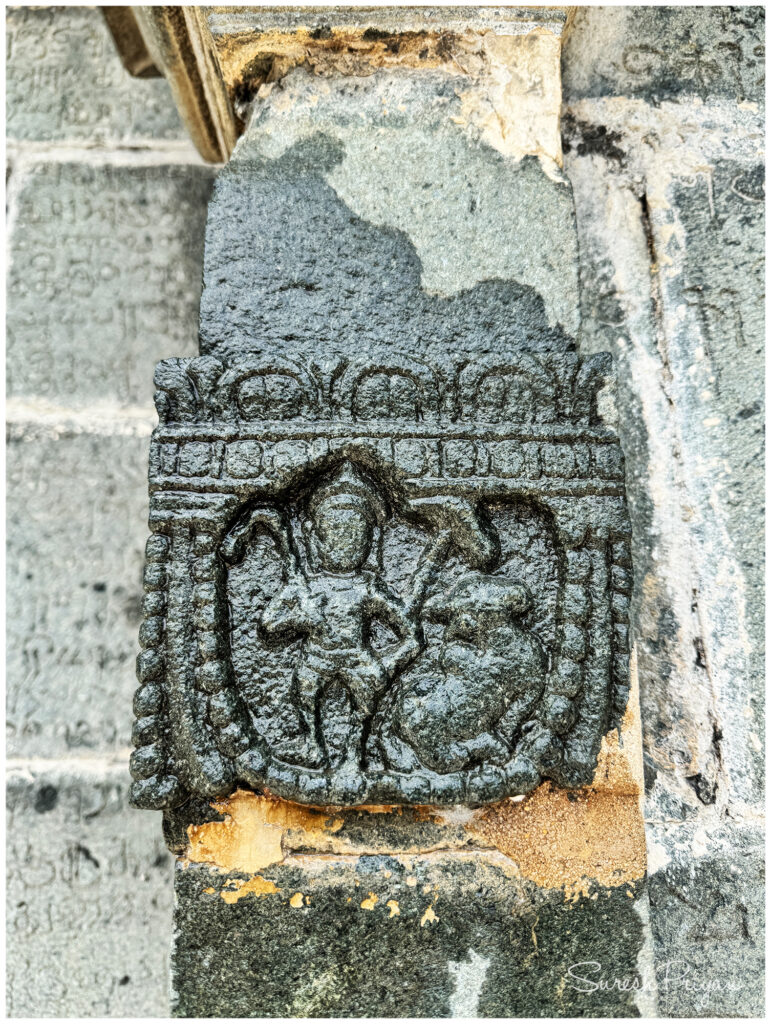
The reliefs of Kannan incarnations have Krishna dancing KudaKoothu, Krishna lifting Govardhana Hill, Krishna stealing butter, Krishna tied to Ural, and Aalilai Kannan was unique to watch. (Refer: Fig.P4, P16-26)


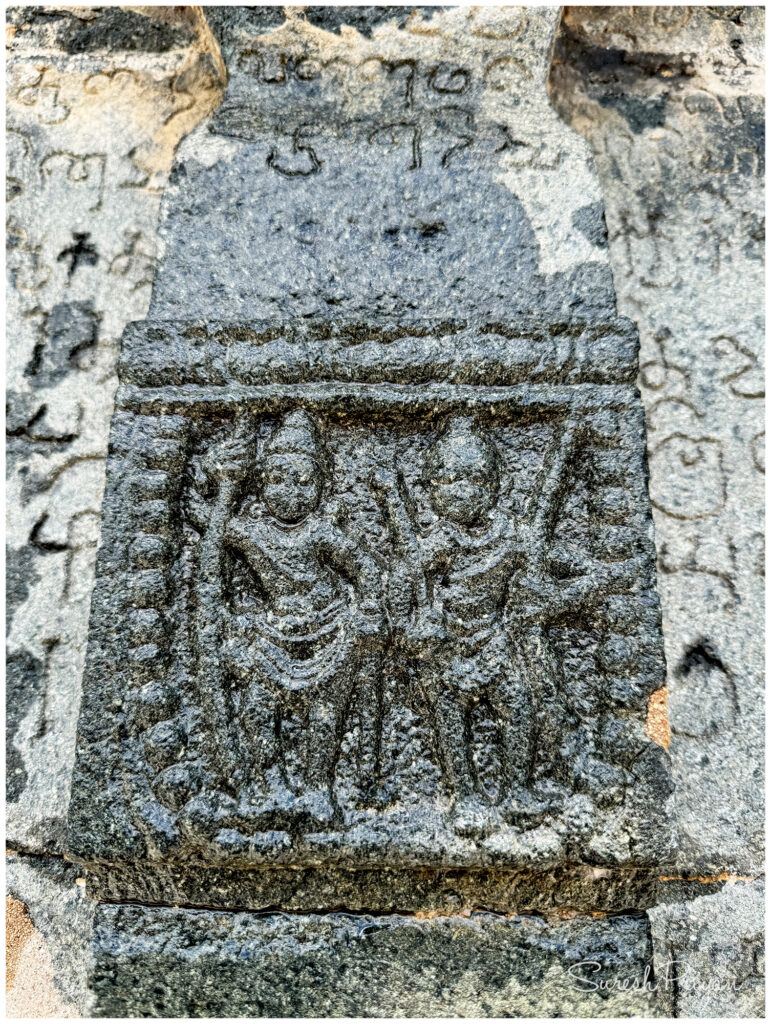


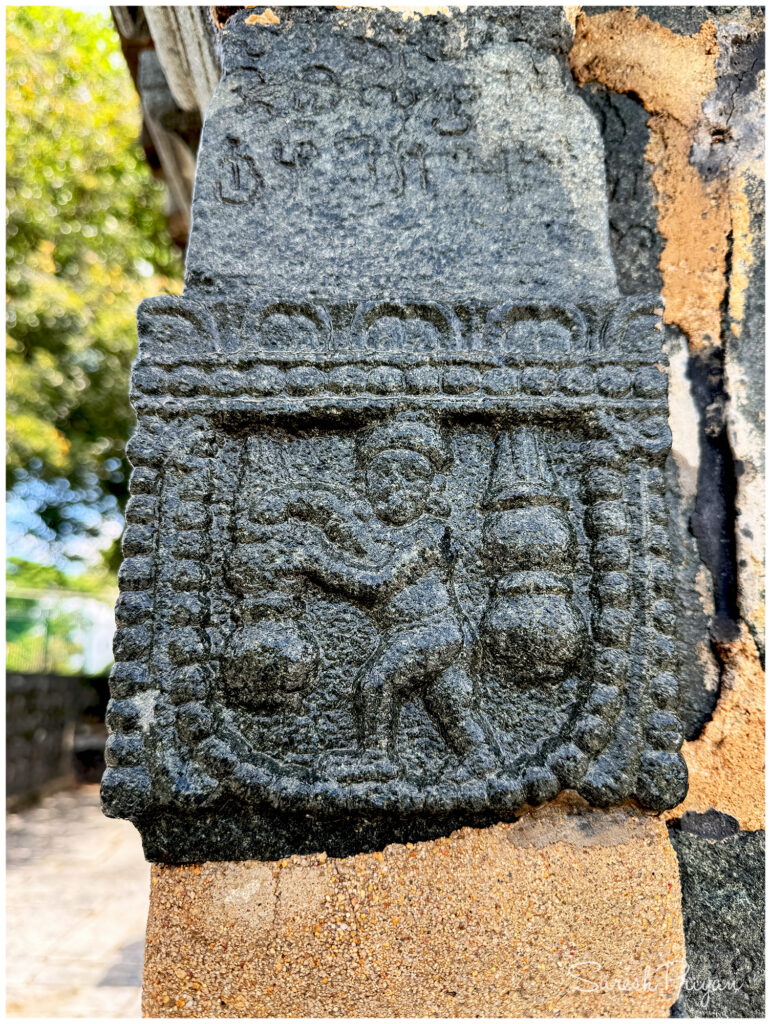
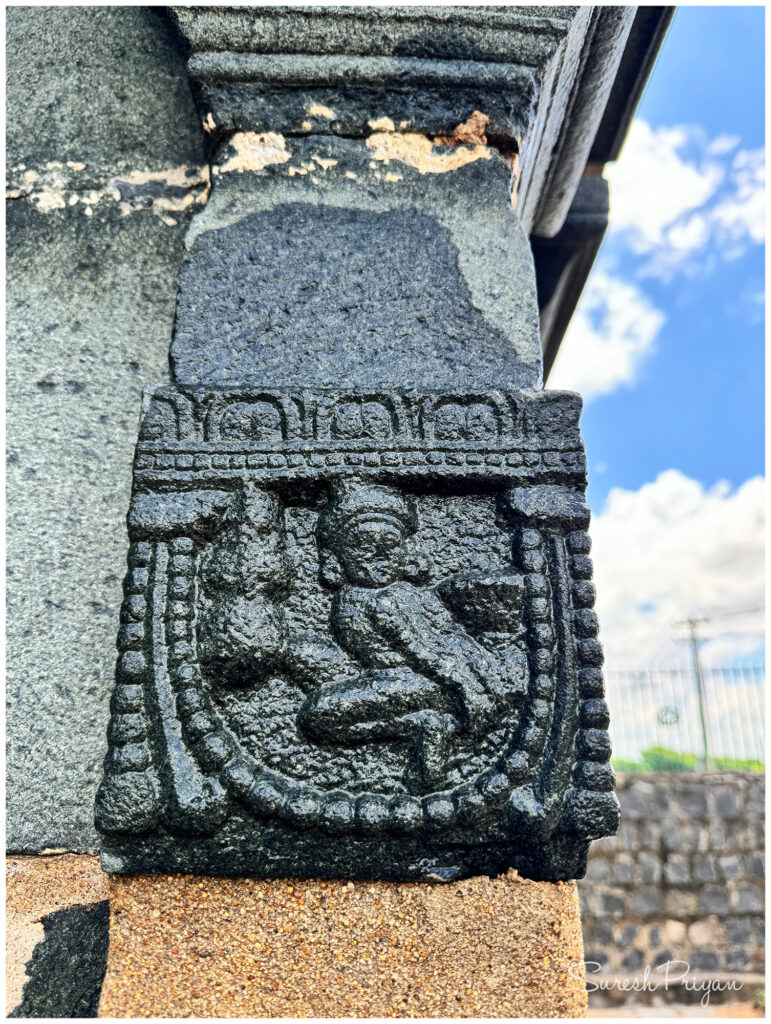
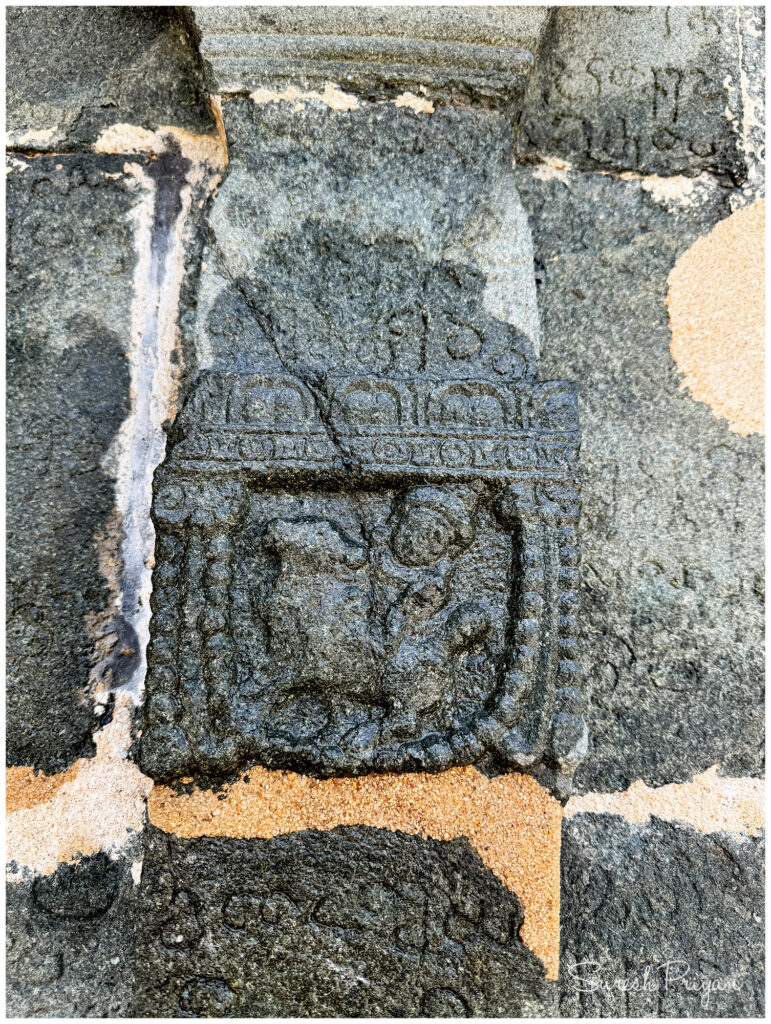
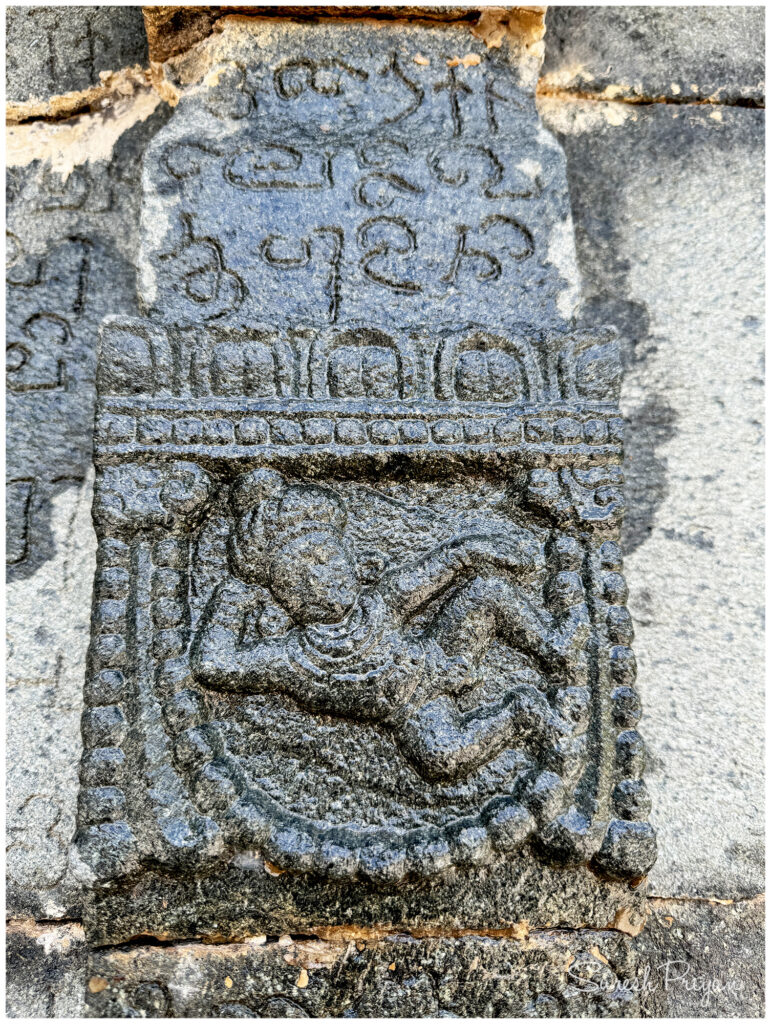
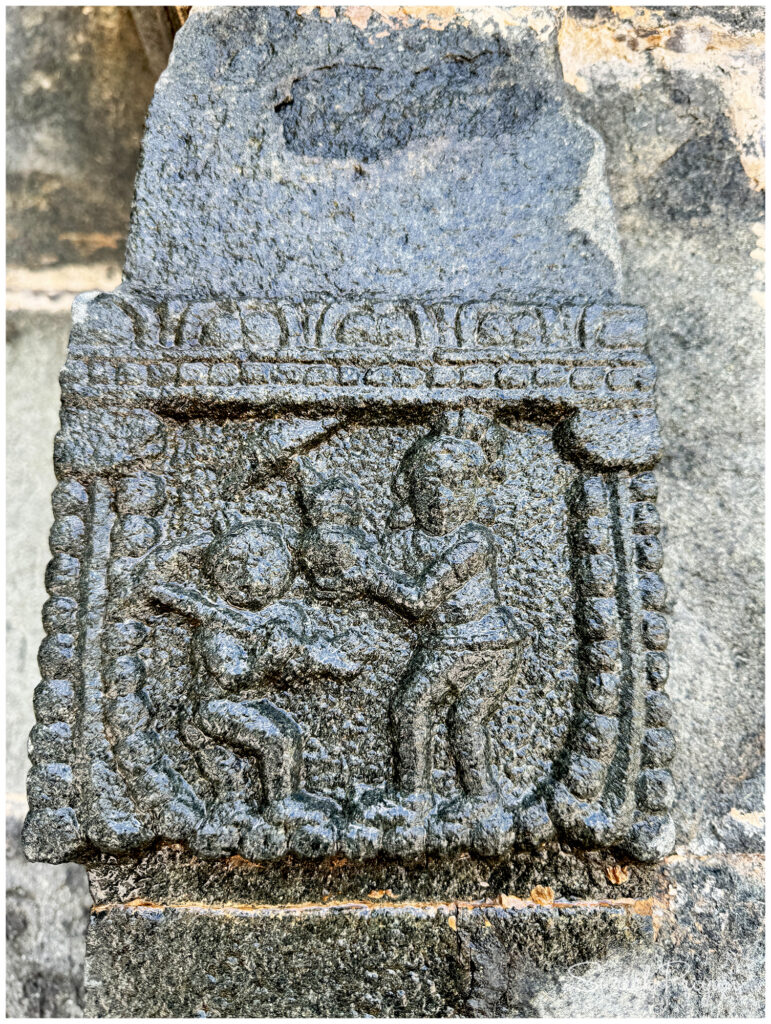

Inside the Sanctum, only a stone Peedam is available. In the Mukha Mandapa, headless granite sculptures were kept. Based on the structure, it may belong to Vishnu, Sridevi and Bhudevi.
Mandapa & Pillars
To the opposite of the Konar temple entrance, three sandstone pillars were placed on a raised platform. Based on the Ornamental work and the sandstone form, it is assumed to be from the Pallava period. A few more pillars are also placed next to it, which is recent.
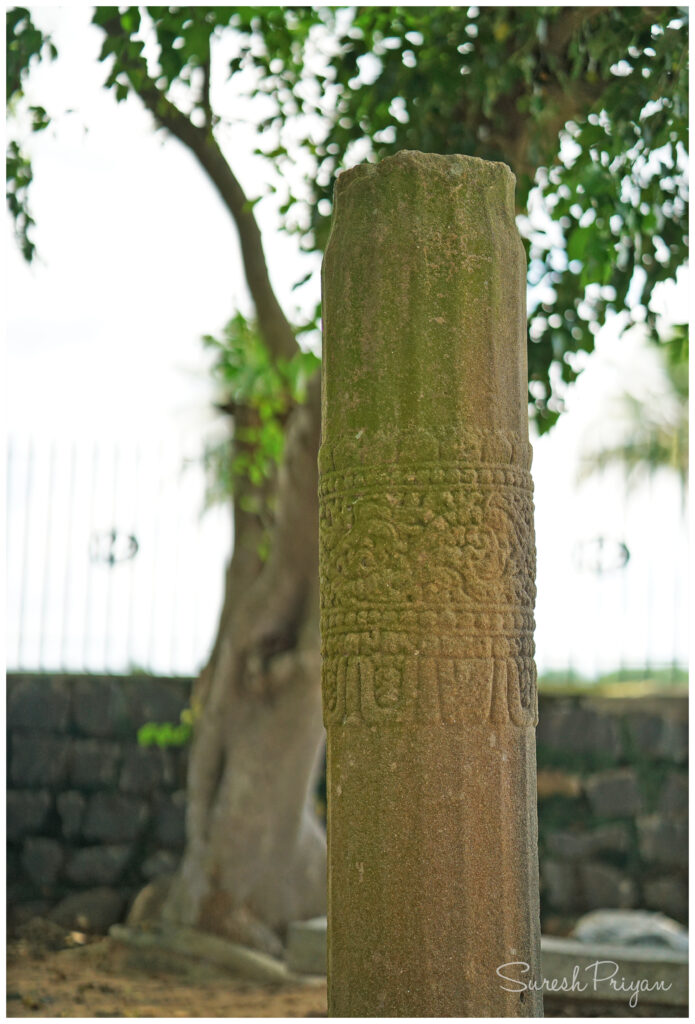
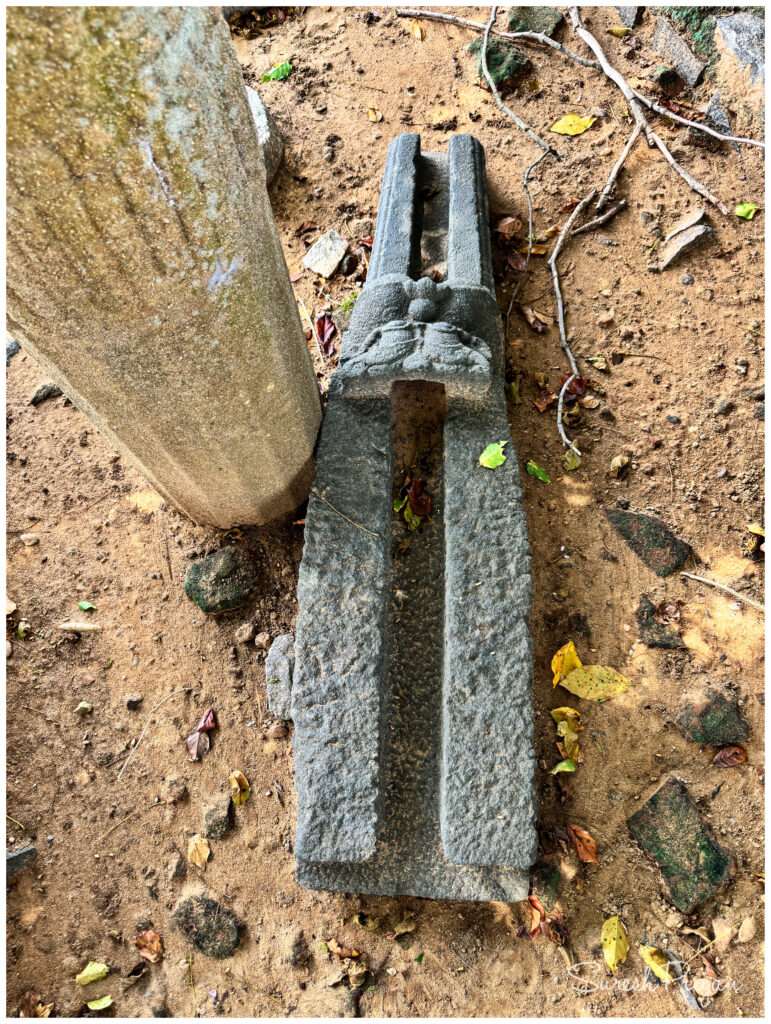
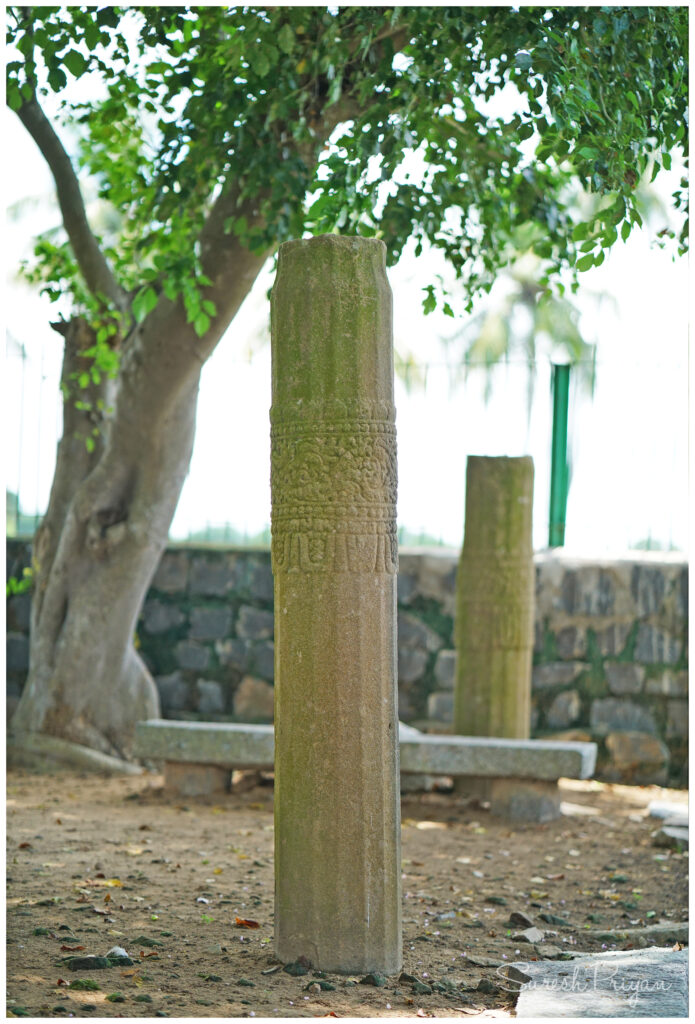
History of the temple
Puranic or Local References
Local Story – An Untied Knot: Here, a golden chariot with seven horses is said to be buried in the soil. To what extent this is true, no one knows. If someone starts reading the letters from the Temple, they must complete it or face tragedy.
Inscriptional References
- Almost 48 inscriptions have been transcribed from the Konar temple, which is noted as the Ruined Vishnu temple. The Konar temple inscribes details belonging to Parantaka Chola I, Sundara Chola, Parantaka Uthamasili, Uttama Chola, Rajaraja Chola I, Rajendra Chola I, Parthivendra Varman, Rajadhiraja Chola I, Kulothunga III, Rajaraja Chola III, and some unknown individuals. Inscriptions mention the deity name as ‘Ninrarulina Perumanadigal’, ‘Govindapadi Uyyakondalwar’, ‘Govindapadi Alwar’, ‘Govindapadi Devar’, ‘Govindapadi Emperuman’ and the place name as Govindapadi in Vallanadu, a sub-division of Damar Kottam in Thondai Nadu, which is presently called Govindavadi.
- The reign year of the Rajaraja I period is unknown, but the inscription mentions the place as Govindapadi Pakkam instead of Govindhapadi Puram. The present village name, ‘Tirumalpur’, was recorded as ‘Tirumalperu’ in the Manikanthesvara temple inscription.
- Another inscription that doesn’t mention the king’s name records Govindapadi Nambi’s pledge to Somayajiiyar of Thirumalpur to conduct the rituals in this Temple. (45 Kalanju donated, and with the paddy that comes as interest through it)
- Parantaka Chola period inscription mentions that Prince Parantaka Uthamasili contributed to burning a perpetual lamp from the interest earned on the 27 Kalanju Gold gifted as Capital.
- The 11th Century, without the King’s name and heavily damaged inscription, records the list of materials: Rice, Flower, Betel leaves, Ghee, firewood for Madapalli to be offered for the pooja, for the same 10 Kadi paddy and 3 Kalanju Manchadi Gold were gifted.
- Pallava Chieftan Parthivendra Varman, in the 13th reign year, records the gift of land for feeding Brahmins. And in the 10th reign year, 96 Saava Moova Sheep/Goat are gifted to burn a perpetual lamp by Vanarajan Alagamaiyan.
- An inscription of the 23rd regnal year of Rajarajachola I records that after his full meikirti, an individual pledged to measure the paddy in the Temple’s front gate as an interest. 90 Kalanju Gold from Pandya Nadu, Rajarajavalanattu, Venbaikudinattu, Ezhur, Amanudaiyan was received by the villagers of Venbakkam.
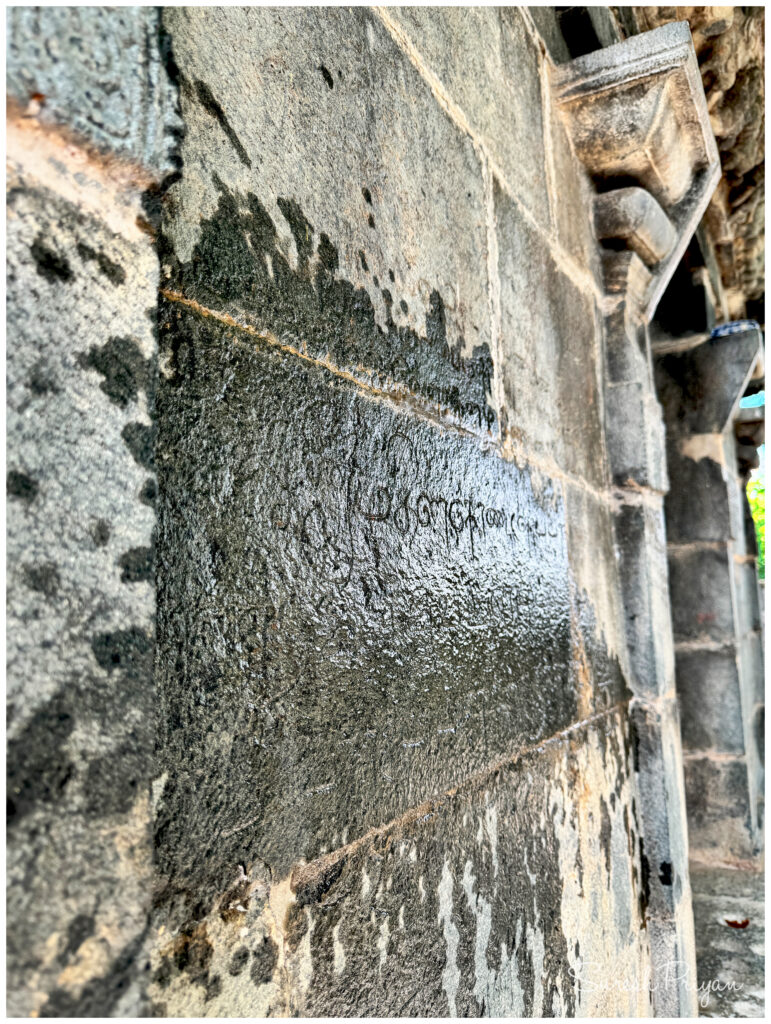
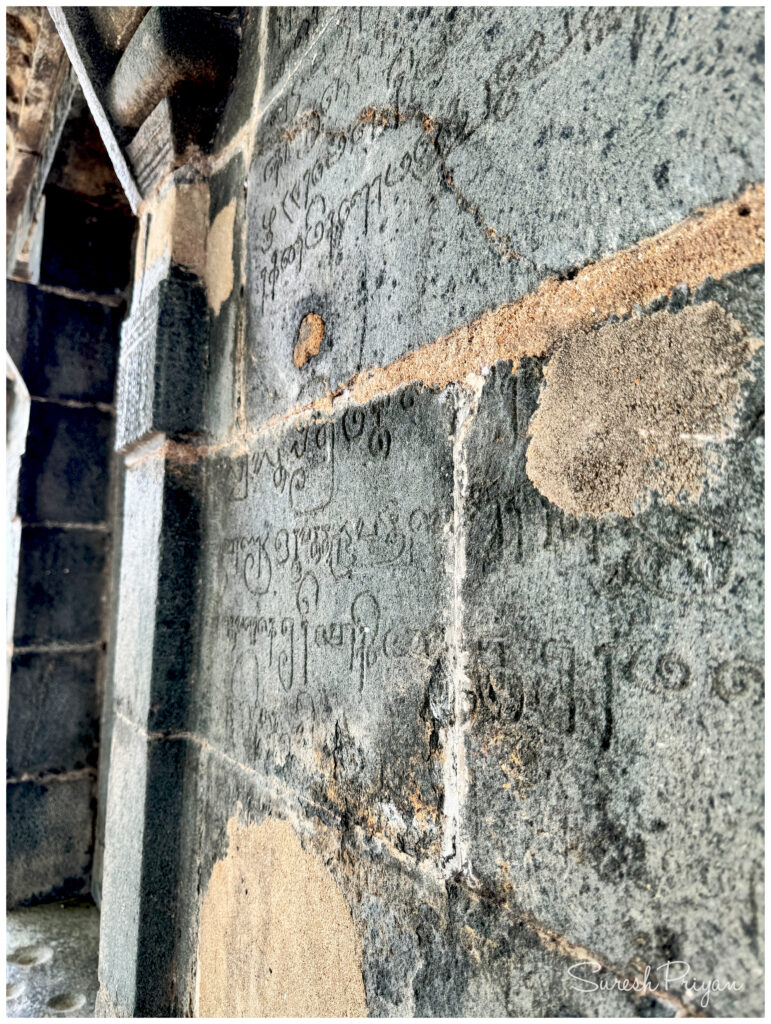
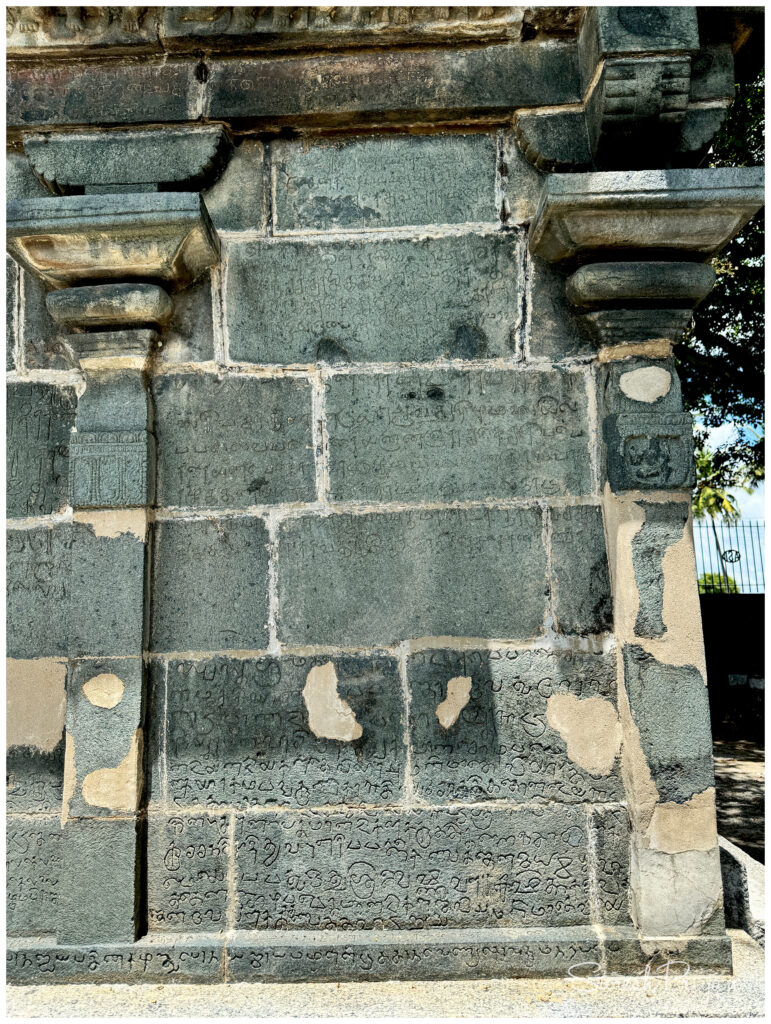
Historical events happening in this temple
- To conduct a festival in the month of Purattasi, a gift of money by Muventha Velan of Pidavur Nattu was made during the 10th year of the reign of Rajaraja Chola I. And also mentions that on the seventh day of the festival, the hymns written by his father were sung.
- Parantaka Chola I, in the 24th reign year, inscribed records of Forty-Five Kalanju’s gift for food offerings and burning lamps. (Kalanju is a measure of weight. Generally, this weight scale was used to measure gold in those days. 1 gram = 4 grams.) Another belongs to the 39th year of the reign and discusses the land sale deed between Mayilatti Nilakandan and Kantani Mayilatti Vaniyan. After purchasing the land, it was donated to the Temple, which shares information on administrative systems.
- Hanuman was installed, and to perform the rituals and light a lamp, 96 sheep were donated by Mayilatti Venkatan, which belonged to the 11th year of Rajaraja I’s reign.
- Rajendra Chola I, 3rd reign year, recorded the gift of land for the festival of Avani Month and announced it as tax-free land.
- The 34th regnal year inscription of Rajathiraja I begins with taking the head of Virapandiya. It records the endowment of conducting Thirumanjanam bathing rituals on the Chithirai month, Punarpoosa Nakshatra day. For the same, 30 Kasu was given as Capital, and the above endowment has to be carried out through the interest.
- Rajaraja Chola’s 3rd reign year record contains two parts, one in Sanskrit and the other in Tamil, which mentions the endowment of food to Brahmins.During the Aditya-I period, Irukkuvelir, Chief of Kodumbalur, gave a gift of a Gold Coin (Swarna Kasu), which was recorded after 100 years.
- Parantaka Chola’s 41st year of reign recorded gifts from Malainadu (Kerala) for lighting a lamp. Nediya Thali Puvan Maran gifted one hundred sheep from Kodunkallaur, which were kept under the care of the Sri Vaishnavas from eighteen countries.
- On the occasion of the Solar eclipse, in the 31st reign year of Parantaka Chola I, a gift of gold coins was donated to do the rituals. Another one records the gift of a perpetual lamp for the merit of her relative, Manavasi Amani Madeviyar.
- The Chola Queen Pallavan Madeviyar of Kunnathur in Umbala Nadu donated a perpetual lamp to this deity as per a record dated to the 31st year of the reign of Parantaka Chola I.
- The 14th reign year of Parakesarivarman may also be a record of the Uttama-Chola. It states that Sri Govindapadi Narayanan of Urupputtir, a member of the Glumganam of Avaninarayana-Chaturvedi Mangalam, consecrated an image of god Manavalapperumal (in the Temple) and made provision for the mid-day offering to the deity by an endowment of land left in charge of the servants of the matha attached to the Temple.
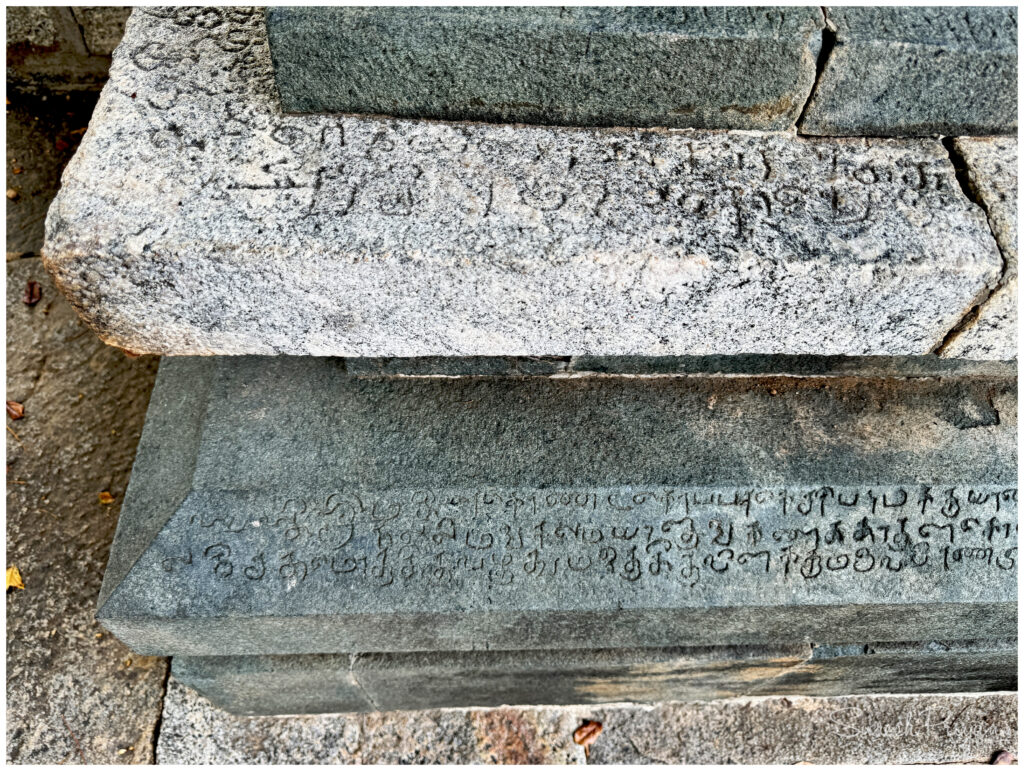
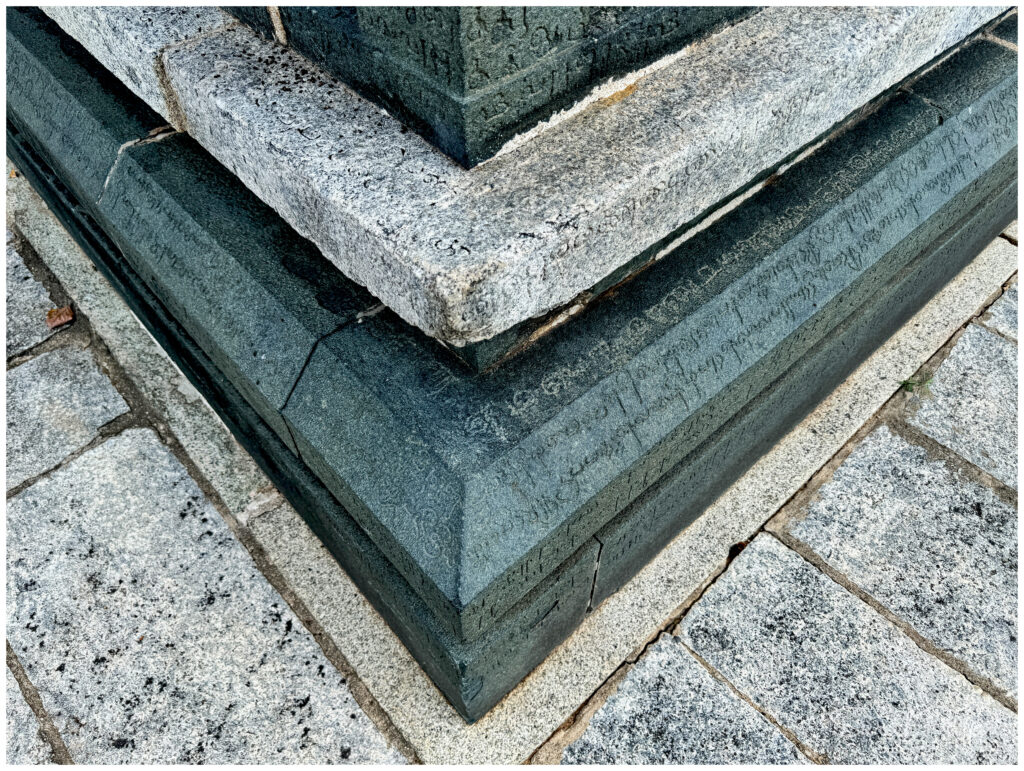
Conclusion
Konar Temple in Tirumalpur belonged to Vishnu, which was clearly evident. Though the Temple’s construction period is clearly unknown, based on the Temple Architecture and the available inscriptions, it was constructed/ reconstructed during the Medieval Cholas, which belongs to the Parantaka Chola period (10th Century). But the StandStone pillars available in front of the temple campus raise questions. We all know that Kanchipuram was the Capital of Pallavas, and this Temple might belong to the Pallava period, which is a question to ask the Historians. Thank you.
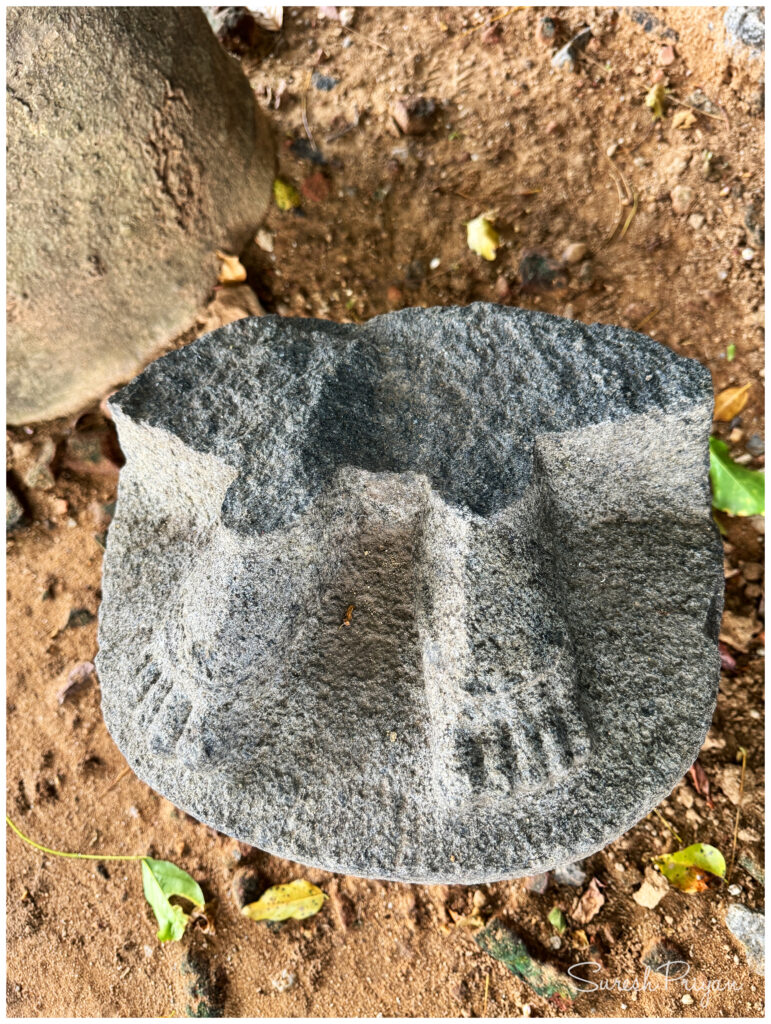
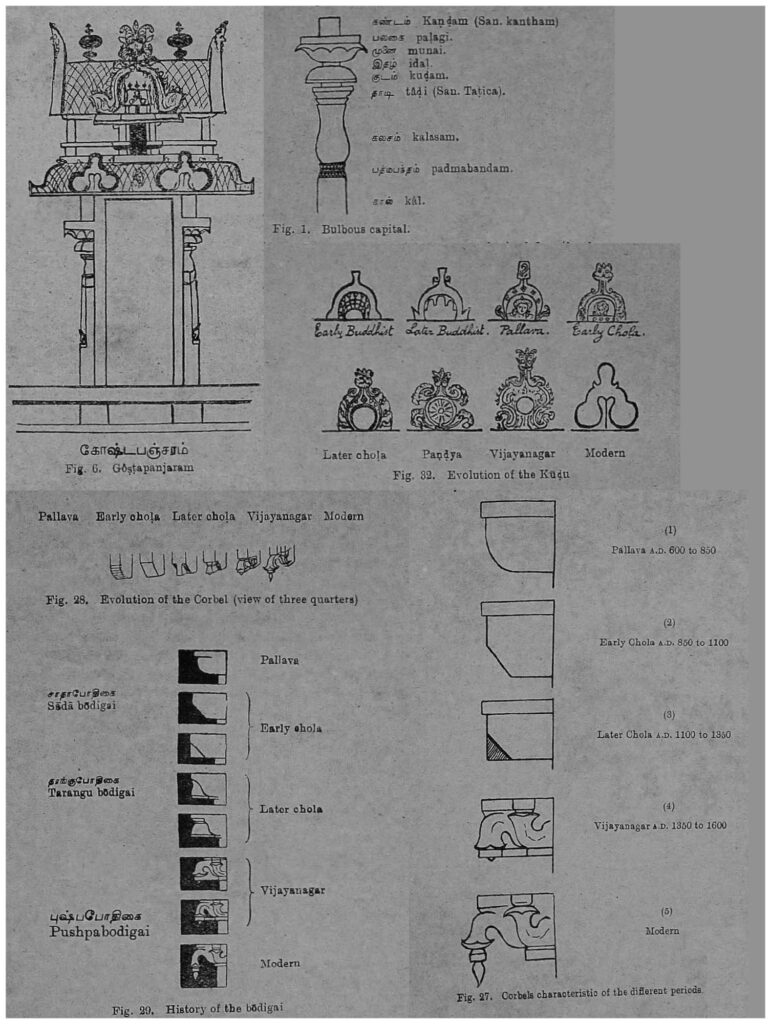
Thanks for supporting us!
To contribute:
PayPal us – paypal.me/sureshpriyan
Google Pay us – priyan.suresh@okicici
திருமால்பூர் கோனார் கோயில்: மறைந்திருக்கும் தொன்மை!
ராணிப்பேட்டை மாவட்டத்தின் வரலாற்றுச் சுவடுகளை தாங்கி நிற்கும் திருமால்பூர், பண்டைக் காலத்திலேயே புகழ்பெற்ற புண்ணிய க்ஷேத்திரமாக விளங்கியது. இங்கு அமைந்துள்ள கோனார் கோயில், இன்று பெரிதாக அறியப்படாதாலும், அதன் கலை, கட்டிடக்கலை மற்றும் சமய முக்கியத்துவம் காரணமாக, ஒரு சிறப்பு வாய்ந்த நினைவிடமாகத் திகழ்கிறது.
கட்டிடக்கலை சிறப்புகள்
இந்தக் கோவில் மிகுந்த எளிமையான நடைமுறையில் கட்டப்பட்டிருந்தாலும், சிலர் கவனிக்காத சிறிய சிற்பங்களும், வாசல் தூண்களில் காணப்படும் பண்டைய வடிவங்களும், அதன் காலத்தைக் கூறும் அழகிய சான்றுகளாக இருக்கின்றன. திருவீதி இல்லாமல், ஒரு தனி நிலப்பரப்பில் அமைந்துள்ளது என்பதாலேயே இது ஒரு தனித்துவம் பெற்ற ஆலயமாகக் கருதப்படுகிறது.
இன்றைய நிலை
இன்றைய நிலையில், இந்தக் கோயில் ஒரு புறக்கணிக்கப்பட்ட இடமாகவே உள்ளது. ஆனாலும், இங்கு கிடைக்கும் அமைதி, பசுமை, மற்றும் ஒரு காலக் கதையின் நினைவுகள், வரலாற்றில் ஆர்வம் உள்ளவர்களையும், ஆன்மிக தேடல் கொண்டவர்களையும் ஈர்க்கக்கூடியவை. இது மீளாய்வு செய்யப்பட்டு, பாதுகாக்கப்பட வேண்டிய ஒரு முக்கியமான மரபுடைமையாகும்.
முடிவுரை
இவ்விதமாக, திருமால்பூரின் கோனார் கோயில் என்பது பச்சை மரங்களின் மத்தியில் அமைந்த ஒரு மறைந்த பொக்கிஷம். இது போன்ற ஆலயங்கள் நம் ஊரின் தொன்மை மற்றும் கலாச்சார அடையாளங்களாக உள்ளன. இவற்றை மீண்டும் வெளிக்கொணர்ந்து, எதிர்கால தலைமுறைக்காக பாதுகாப்பது நம் பொறுப்பு.

